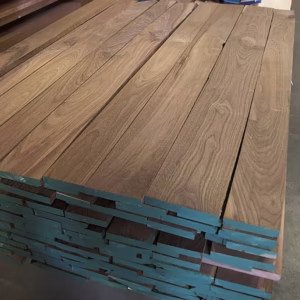walnut wood boards for sale
Walnut Wood Boards for Sale: A Comprehensive Guide
walnut wood boards for sale, Walnut wood is a premium hardwood known for its rich color, durability, and versatility. Whether you’re a woodworker, furniture maker, or DIY enthusiast, walnut wood boards offer an excellent choice for high-end projects. In this article, we’ll explore the benefits of walnut wood, its common uses, where to buy walnut wood boards, and answer frequently asked questions.
Why Choose Walnut Wood Boards?
1. Beautiful Aesthetic Appeal
Walnut wood features a deep, chocolate-brown color with occasional purple or gray undertones. Its grain is typically straight but can have attractive waves or curls, making each board unique.
2. Durability & Workability
Walnut is a strong hardwood with a Janka hardness rating of 1,010 lbf, making it resistant to wear while still being relatively easy to work with using hand or power tools.
3. Excellent for Fine Woodworking
Due to its stability and smooth finish, walnut is ideal for:
- Furniture (tables, cabinets, chairs)
- Flooring
- Musical instruments (guitars, pianos)
- Decorative veneers
- Cutting boards & charcuterie boards
4. Sustainability
Black walnut (Juglans nigra) is primarily sourced from North America. While not as fast-growing as some other hardwoods, responsible forestry practices ensure its availability.
Types of Walnut Wood Boards Available for Sale
When shopping for walnut wood, you’ll encounter different cuts and grades:
1. Rough-Sawn vs. Surfaced Boards
- Rough-sawn: Unfinished, straight from the mill—ideal for custom projects.
- S4S (Surfaced Four Sides): Smooth and ready for use, saving time on preparation.
2. Common Grades
- FAS (First & Second Grade): Highest quality, minimal defects.
- #1 Common: Some knots and imperfections but still good for many projects.
- Select & Better: A balance between quality and affordability.
3. Live Edge Walnut Boards
For a rustic, natural look, live edge walnut slabs retain the bark and natural contours of the tree.
Where to Buy Walnut Wood Boards
You can purchase walnut wood from:
- Local sawmills & lumberyards (best for inspecting grain and color in person)
- Online retailers (e.g., Woodcraft, Rockler, Bell Forest Products)
- Specialty wood suppliers (for exotic or figured walnut)
- Auction sites & marketplaces (e.g., eBay, Etsy for smaller pieces)
Price Range
- Standard walnut boards: 8–15 per board foot
- Live edge slabs: 15–30+ per board foot (depending on size and figure)
- Figured walnut (curly, burl): 20–50+ per board foot
FAQs About Walnut Wood Boards
1. Is walnut wood good for cutting boards?
Yes! Walnut is food-safe, durable, and naturally resistant to bacteria, making it a great choice for cutting boards and kitchenware.
2. Does walnut wood darken over time?
Walnut tends to lighten slightly when exposed to sunlight, but applying a UV-resistant finish can help maintain its rich color.
3. How do I finish walnut wood?
- Oil finishes (tung oil, linseed oil) enhance its natural beauty.
- Polyurethane or lacquer provides a protective, glossy coat.
- Water-based finishes preserve the original color without yellowing.
4. Can walnut wood be used outdoors?
Walnut is not the best choice for outdoor use as it lacks the natural rot resistance of woods like cedar or teak. If used outside, it should be properly sealed.
5. What’s the difference between black walnut and European walnut?
- Black walnut (Juglans nigra): Darker, richer color; commonly used in North America.
- European walnut (Juglans regia): Lighter brown with more subtle grain; often used in high-end furniture.
6. How should I store walnut wood boards?
Store in a dry, climate-controlled area to prevent warping. Keep boards flat and supported to avoid bending.
7. Is walnut wood expensive?
Walnut is more expensive than oak or maple but is valued for its premium look and workability. Prices vary based on grade, thickness, and figure.
8. Can I stain walnut wood?
Walnut’s natural color is so beautiful that staining is rarely needed. If desired, use a light stain to avoid masking its rich tones.
9. What thicknesses are available?
Common thicknesses include:
- 4/4 (1″ rough, ~¾” surfaced)
- 6/4 (1½” rough, ~1⅜” surfaced)
- 8/4 (2″ rough, ~1¾” surfaced)
10. Are walnut wood boards sustainable?
Yes, when sourced from responsibly managed forests. Look for suppliers certified by the Forest Stewardship Council (FSC).
Showing the single result
